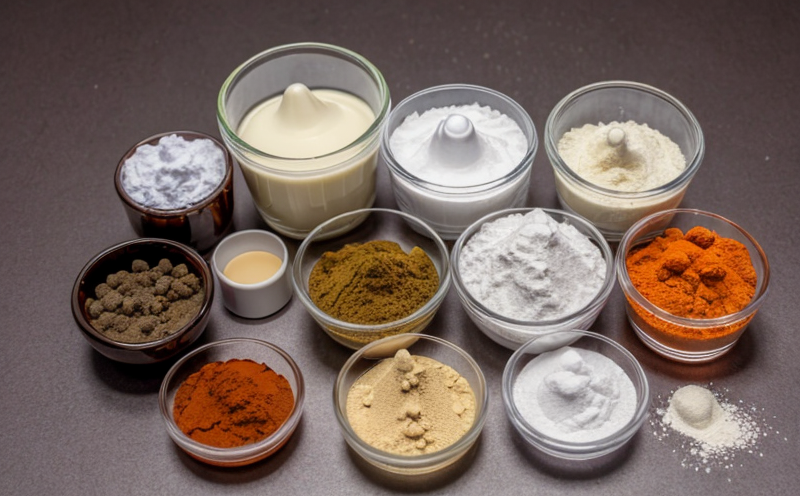Ethanol IPA Volatile Content Testing
The testing of volatile content in Ethyl Alcohol (IPA) is a critical component within pharmaceutical excipients and formulation ingredients. This test ensures that the product meets the required purity standards, thereby ensuring patient safety and efficacy. The process involves analyzing the sample to determine the percentage of ethanol by volume which evaporates at a specific temperature under controlled conditions.
Understanding the volatility of IPA is essential in various pharmaceutical applications as it affects solubility, stability, and compatibility with other ingredients. For instance, in the formulation of liquid medications or topical creams, the precise determination of volatile content ensures that the product remains stable over its shelf life and does not degrade prematurely.
The method for determining the volatile content typically follows international standards such as ASTM D56 and ISO 1523-1. These protocols specify the temperature at which the sample is heated (typically 170°C) to ensure that only the volatile components are driven off, leaving behind a residue of non-volatile materials.
Preparation of the specimen involves obtaining an accurate volume of the IPA solution and placing it into a suitable container that can be sealed. The container must have been cleaned thoroughly to avoid any contamination from previous samples. Once prepared, the sample is heated in a controlled environment according to the specified temperature and time parameters.
The testing apparatus used for this process includes a closed-cup type flash point tester capable of maintaining precise temperature control. This equipment ensures accurate measurement by providing consistent heating conditions that eliminate variability due to external factors such as ambient temperature fluctuations.
After the designated period, the remaining residue in the container is analyzed using gravimetric methods or other appropriate analytical techniques to calculate the percentage of non-volatile materials present. The results provide valuable information about the composition of the IPA sample and help pharmaceutical manufacturers ensure consistency across batches.
In conclusion, ethanol IPA volatile content testing plays a crucial role in maintaining quality control standards within the pharmaceutical industry. By adhering strictly to established protocols and utilizing advanced instrumentation, laboratories can produce reliable data that supports informed decision-making processes throughout product development cycles.
Why Choose This Test
Selecting ethanol IPA volatile content testing is essential for ensuring the highest standards of quality in pharmaceutical products. The test provides critical insights into the purity and consistency of excipients used in formulations, helping to maintain regulatory compliance and enhance product performance.
For quality managers and compliance officers, this service offers peace of mind knowing that every batch undergoes rigorous testing to meet stringent industry requirements. R&D engineers benefit from accurate data which guides their research efforts towards developing safer and more effective medications. Procurement teams gain assurance regarding supplier reliability through consistent test results.
The precision offered by these tests ensures adherence to Good Manufacturing Practices (GMP) guidelines set forth by regulatory bodies like the FDA, EMA, and WHO. This not only protects public health but also fosters trust among consumers who expect safe and effective treatments.
Moreover, choosing this service allows organizations to stay ahead in a competitive market where innovation and quality are paramount. By investing in thorough testing procedures early on, companies can avoid costly recalls later down the line while maintaining positive brand reputation.
Customer Impact and Satisfaction
The impact of choosing ethanol IPA volatile content testing extends beyond mere compliance; it significantly enhances customer satisfaction by delivering superior quality products. When manufacturers invest in robust testing protocols, they demonstrate their commitment to providing safe, effective medications that meet or exceed expectations.
Customers benefit from knowing that the pharmaceutical products they use are consistently reliable and free from impurities that could compromise effectiveness or cause adverse reactions. This trust translates into higher customer loyalty and increased market share for companies offering high-quality solutions.
In addition to direct benefits for end-users, the testing process also contributes indirectly by fostering an environment of continuous improvement within manufacturing operations. By identifying areas where improvements can be made, organizations can refine their processes leading to greater efficiency and reduced waste.
The results from such tests are instrumental in maintaining long-term relationships with suppliers who consistently provide high-quality materials. This collaborative approach ensures that all parties involved work towards common goals of excellence and innovation.
International Acceptance and Recognition
Ethanol IPA volatile content testing is widely recognized internationally as an important quality assurance measure in the pharmaceutical industry. Compliance with established standards like ASTM D56 and ISO 1523-1 ensures that results are accepted across borders, facilitating global trade.
Pharmaceutical companies operating globally appreciate the uniformity provided by these standardized methods which allow seamless integration of data across different regions. Regulatory agencies worldwide rely on consistent testing procedures to assess product safety and efficacy accurately.
The acceptance of international standards also promotes transparency in communication between stakeholders involved in drug development projects. Clear, comparable results enable more effective collaboration among researchers, clinicians, regulators, and patients alike.
Furthermore, adherence to these global norms helps protect consumer rights by ensuring that all marketed products meet the highest safety and quality benchmarks regardless of geographical location or cultural differences.





